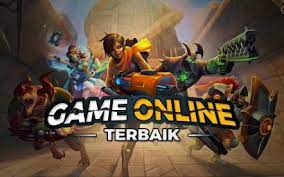
Introduction to the Joker Card
The Joker card is a fascinating and versatile element of playing card decks. Initially introduced in the United States during the 19th century, the paito angka has since become a staple in many card games worldwide. Its distinct design and unique role within various games make it a subject of intrigue and curiosity among players and collectors alike.
Historical Background
The Joker card originated from the game of Euchre, which was popular in the United States during the mid-1800s. As the game evolved, players began using an extra card known as the “Best Bower” to represent the highest trump card. Over time, this card was adapted into what we now recognize as the Joker. The Joker’s design often features a clown or jester, symbolizing playfulness and unpredictability.
Design and Characteristics
Joker cards typically feature vibrant colors and whimsical artwork, often depicting a jester or clown. The standard design includes a colorful outfit with bells and an expressive face, which adds a fun element to the deck. Many modern decks feature two Jokers, one with a more elaborate design and the other simpler, often used interchangeably in different games.
Role in Card Games
The Joker card serves various purposes depending on the game being played. Here are some common roles it plays:
- Wild Card: In many games, the Joker acts as a wild card, meaning it can substitute for any other card to help form winning combinations. This adds an exciting twist to the gameplay and can significantly alter strategies.
- Scoring Card: In some games, the Joker may have specific scoring value, contributing to the overall points a player accumulates.
- Unique Gameplay Element: Certain games, such as Joker Poker or Joker Rummy, incorporate the Joker into their mechanics, allowing for unique strategies and combinations that wouldn’t be possible without it.
- Game-Specific Rules: Many card games have specific rules regarding the use of the Joker, which can vary significantly between different games. Players must familiarize themselves with the rules of the game they are playing to fully understand how the Joker functions within that context.
Cultural Significance
Beyond its use in games, the Joker card carries cultural symbolism. It often represents chaos, unpredictability, and the element of surprise. In some contexts, the Joker is associated with trickery and cunning, much like the role of a jester in medieval courts.
In literature and popular culture, the Joker has been portrayed as a character embodying both chaos and humor, often used to explore themes of duality and morality. This cultural significance adds depth to the Joker card, making it more than just a game element.
Collectibility and Artwork
The Joker card has become a popular subject among collectors and artists. Many playing card decks feature unique and artistic representations of the Joker, making it a sought-after item for enthusiasts. Special editions and custom decks often showcase the Joker in creative and imaginative ways, highlighting its appeal beyond traditional gameplay.
Conclusion
The Joker card is a multifaceted element of playing cards, serving various roles across different games and cultures. Its whimsical design, wild card capabilities, and cultural significance make it a beloved feature among card players and collectors alike. Whether acting as a game-changer in a high-stakes poker game or simply adding flair to a casual game night, the Joker continues to captivate and entertain players around the world.